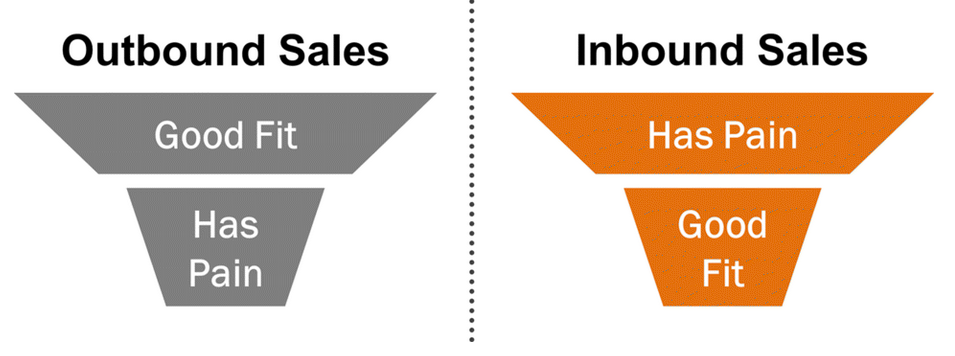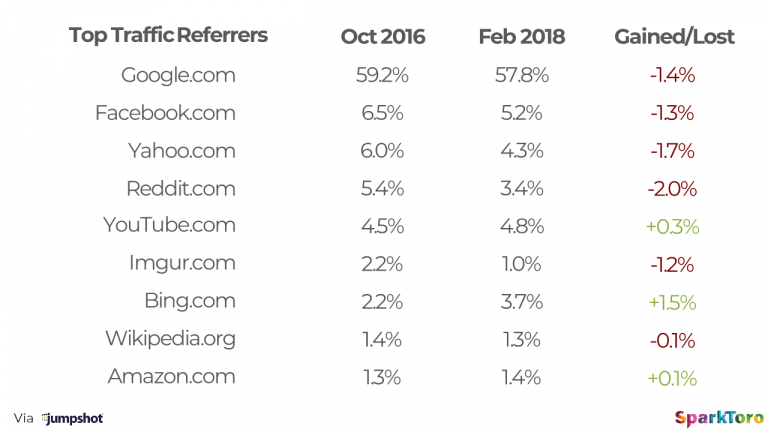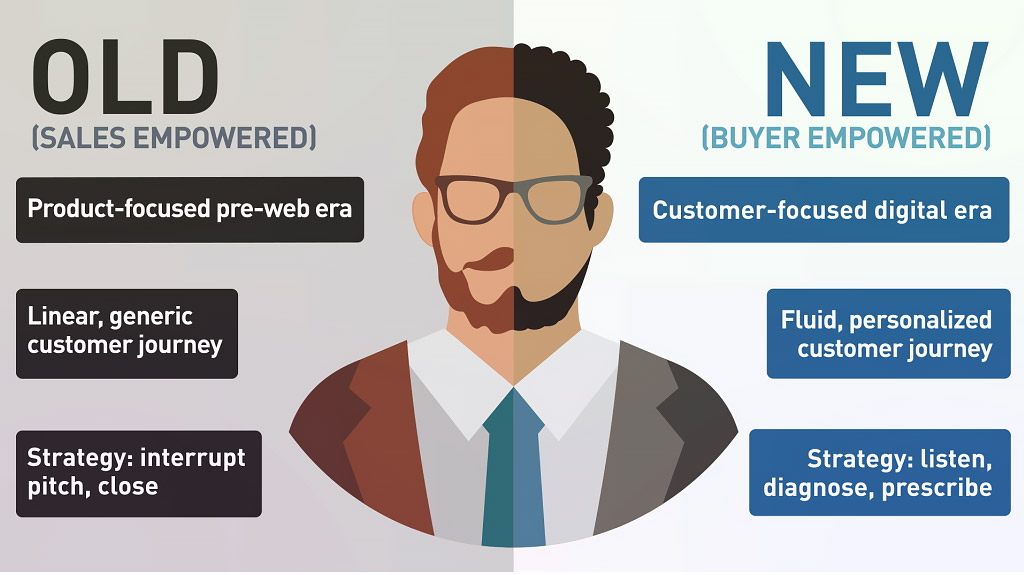Outbound Sales
More than cold-calling, outbound sales remain relevant in 2024, when done right. We’ll look at outbound sales tactics and when you might use them.
Today, many companies are ditching outbound strategies in favor of an inbound model where interested leads get in touch with a salesperson when they’re ready to learn more about a solution.
Long associated with cold calling and bad scripts, outbound sales gets a bad rap—it’s often unsustainable, irritating, and leads to a lot of dead ends and wasted efforts.
Sellers don’t have time to educate, as they’re trying to keep the conversation going long enough to close a deal or book a meeting.
That said, while some traditional outbound sales strategies (like cold calling) have earned their tarnished reputation, a smart outbound strategy may be the secret to attracting new customers and powering up your growth engine.
In this article, we’ll discuss what outbound sales is, how it works, and when to use it—the right way. Read on to learn more.
What is outbound sales?
An outbound sale is a process where a salesperson reaches out to a potential customer in an effort to generate interest and sell a company’s product or services.
While cold calling is a classic example of outbound sales, it’s just one of many strategies sellers have at their disposal.
Today’s outbound sales teams use a wide range of tactics to connect with leads. Whatever the strategy, be it email, social media, or yes, cold calling, outbound sales offers some big benefits to organizations–targeted lead generation, fast feedback, and the ability to drive growth by taking matters into your own hands.
Inbound vs. outbound sales
Inbound vs. outbound isn’t really the right way to think about the two approaches. Both strategies bring their own strengths to the table and often, companies benefit from adopting both.

While we touched on it in the last section, here’s a breakdown of the core differences between inbound and outbound sales and when you might use one approach over the other.
The main difference between inbound and outbound is who initiates contact–the buyer or the seller. Outbound sales tactics are proactive, whereas, inbound sales strategies aim to drive the prospect to make the first move.
Inbound sales
Inbound sales come to you. The process works like this: a potential customer reads a blog post, or sees an ad on Facebook, or stumbles upon a brand during their research for a particular solution.
From there, they’ll do some additional research and maybe call a company or fill out a form. The sales rep will follow up to seal the deal. With this model, marketing and sales teams work together to target the right leads and nurture them with content, so that by the time potential buyers are ready to engage with a sales rep, they’re coming in “warm.”
Inbound strategies such as content and email marketing, social media ads, and SEO aim to reach potential prospects already engaged in the research process or generate awareness among audiences who don’t yet know that they have a problem.
Part of the reason that some sales and marketing experts say “outbound is dead,” is because this idea that today’s seller must be an empathetic, customer-centric advisor started with inbound.
Outbound sales
Outbound sales follow what you might think of as a “traditional” approach to selling, comprised of “old school” tactics like cold calls, tradeshows, radio ads, and direct mail. That said, outbound sales isn’t a term reserved for bygone or spammy selling methods–instead, you should think about outbound as any strategy in which the salesperson makes contact with potential buyers.
According to research from sales guru, Marc Wayshak, outbound sales accounts for 55% of generated leads, compared to the 27% generated by inbound strategies. Wayshak also found that 66.7% of sellers aren’t getting in front of enough prospects.
Part of the problem may be due to recent changes in the organic marketing landscape. Google is referring less outgoing traffic to websites, while social platforms, like Instagram and Facebook, are making it more difficult for brands to connect with audiences without purchasing ads.

Source: Sparktoro
While the inbound sales model is newer and designed to speak to today’s modern, research-driven buyer, organizations that use both inbound and outbound strategies stand to deliver the best possible results.
What does an outbound sales rep do?
The basic job description for outbound sales reps is as follows: Outbound sellers contact leads and customers to sell products and services.
They use a combination of cold calls, emails, and social media to generate leads and drive sales for organizations spanning a wide range of industries and are responsible for hitting key performance indicators (KPIs) directly tied to sales and revenue goals.
Every company has a different outbound sales process to help them reach the right customers and convert leads into sales.
That said, typical duties include the following:
- Identify target customers
- Lead generation
- Outreach and qualification
- Meetings and sales calls
- Closing
Contrary to all of the “is cold calling dead?” “is outbound dead?” think-pieces written by sales bloggers in recent years, outbound is alive, well, and evolving along with the modern buyer.

Source: The Creative Alliance
According to Growlabs CEO, Ben Raffi, a well-designed outbound sales strategy is backed by science. You can’t just hit the ground running with no direction and expect to see real growth. In other words, organizations need to come up with a gameplan that defines “what to do when,” based on the buyer’s journey.
Here’s what effective outbound agents are doing in 2020:
- Take Audience Research Seriously: Gong’s Bryan Tucker, emphasized the importance of coming to a call or meeting prepared with contextual information about the buyer and their business.
- Design Outreach Plans: A great sales quote Bridge Group’s Trish Bertuzzi, “It is the cold that is dead – not the calling… I agree that no one should be “cold” calling anymore – meaning having a name & number, but lacking a compelling reason to call.”Outbound sellers need a solid game-plan to drive results. Make sure to clearly define what your sales team should cover in every cold outreach effort–why are they reaching out, what is the target outcome for this interaction, who are you talking to, why do they need this solution?
- Embrace New Methods Like Chatbots & Social Selling: Today’s sellers source data from a wide range of sources from out-of-the-office replies to chatbots and social media. For example, one of our clients, ThriveHive, was able to reduce their average sales cycle from 11 days to four by using Drift Live Chat. The company was able to capture and qualify potential buyers more effectively, provide relevant information, and connect sales reps to website visitors in real-time. Channels like LinkedIn, Facebook, and Google have also made it easy for sales and marketing teams to create lists of potential buyers based on location, interests, and demographics. While marketers typically use this data to create targeted ad campaigns and inform content efforts, sales teams can target people based on specific criteria—like location, job title, company size, industry, role, etc. to inform persona-based cold email or direct messaging–aka social selling. According to Optinmonster research, 78% of salespeople who use social selling outperform their peers who don’t use this strategy and 31% of sellers say it has helped them develop deeper relationships with clients. For example, a SaaS company might search for San Francisco-based customer success leaders with 100-150 employees. Sellers can start the conversation with industry-specific talking points, and customize with a personal message.
- Personalize Communications: Sales automation is an essential piece of today’s marketing landscape, however, it’s important to remember that it should be used to enhance the sales process, not take it over. Use any data you’ve collected on potential buyers including buying history, company information, previous service provider, and pain points, challenges, and so on. You want to have a deep understanding of what every stakeholder values during each stage so you can tailor your pitch to highlight the benefits based on who you’re talking to–the CEO cares about different things than the accounting team, the sales director, or the CMO.
Which industries use outbound sales?
Outbound strategies can be effective because they offer a few things that inbound can’t provide, including:
- Control over selling cadence.
- Immediate feedback and measurable results.
- Laser-targeted outreach.
- Personal contact with potential buyers.
It’s worth pointing out that outbound sales (and inbound, too) aren’t specific to one industry, but tend to work best in organizations that:
- Sell costly or high-consideration products/services and long sales cycles.
- Pay commissions to salespeople.
- There’s a clear target.
- You’re targeting an audience that doesn’t mind cold emails, DMs, or calls.
Additionally, startups and smaller companies with more time than money can benefit big time from smart outbound strategies.
Wrapping up
The so-called decline of outbound selling is a response to the well-documented shift in buyer behavior. As is the case with inbound sales, tactics must go beyond persuasion, and instead, focus on building personal connections, adding value, and listening to your prospects.
To learn more about modernizing your sales strategy, we offer several sales resources to bring your sales team up to speed, including.





























